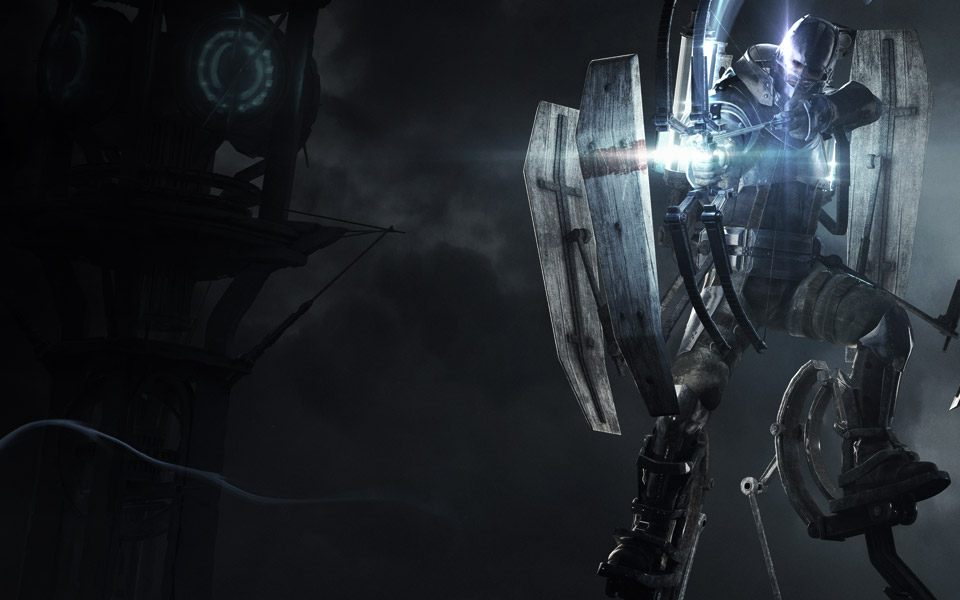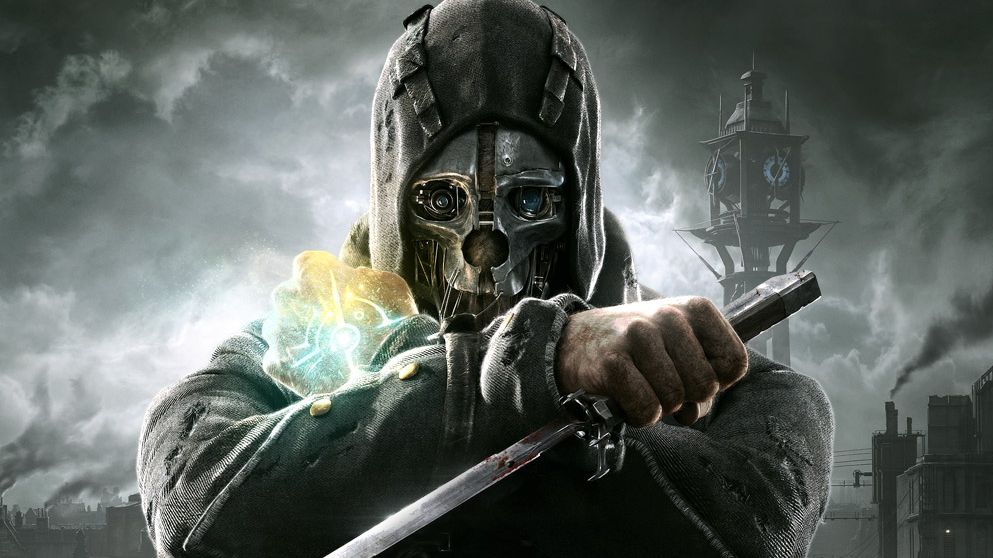Dishonored's city of Dunwall


In Why I Love, PC Gamer writers pick an aspect of PC gaming that they love and write about why it's brilliant. Today, Chris admires the streets of Dishonored.
Dishonored without Dunwall would still be an excellent game. It nearly was. Arkane’s supernatural immersive sim was almost set in medieval Japan, and almost in London in 1666, before it settled on a city of its own creation. This is a game about meticulously crafted environments waiting to be cracked apart with your assassin’s toolkit: it’s about power and freedom and cunning, about you and your choices. It could be set just about anywhere, but I’m glad it wasn’t. Dunwall is one of my favourite videogame places, providing the context and atmosphere that allows Dishonored’s well-designed systems to output an experience with real artistic integrity.
In the span of a relatively short campaign you encounter the city from every angle. You get a sweeping glance of the skyline in the prologue, at the height of day, as the Empress is assassinated. Escaping from prison at dusk provides a glimpse of Dunwall’s rotting depths as well as the steel web of new technology slowly being spun around it. Your crumbling red brick safe house, the Hound Pits pub, overlooks a ruined residential part of town—the revolution pulling their own pints for want of a landlord.
Your first mission involves stalking through industrial streets at dusk before breaking into the High Overseer’s office—a sheer stone testament to militarised faith. There’s a sense of days passing slowly as you cross Kaldwin’s Bridge at sunset and raid Lady Boyle’s party by moonlight. The only other game to use time of day this effectively is Half-Life 2—another Viktor Antonov game.
London is an important reference point for Dunwall, but not just any London. This isn’t the London of Sherlock Holmes, or the cor-blimey God-save-the-Queen themepark that you should expect from Assassin’s Creed Syndicate, or the jumble of fashions and speculative technologies and social patterns that sometimes coagulates into steampunk. Dunwall remembers a different London—a working-class city of wet streets and red brick, heavy with the legacy of the industrial revolution. This is the London of the Leeds-born landscape painter John Atkinson Grimshaw, whose ‘Nightfall on the Thames’ might be Dishonored concept art. This unusually sophisticated approach makes Dunwall a rare example of a videogame location that owes more to real history than it does to contemporary pop culture.

Dishonored isn’t historical fiction, however, it’s fantasy—and Long Island proves to be a useful touchstone for Dunwall too. Lovecraft’s New England is felt in the juxtaposition of industrial 19th century streets and ancient horror: shrines to the Outsider found in lonely basements, a furnace set among the bones of an ancient leviathan whale. This is a society growing fat and sick because of its helpless addiction to power drawn from the ocean. The soul of the game is found in the contrast between moments of beauty—a sunset over gabled rooftops, boats bobbing in the tide—and ugliness, the corpse piles and mouldy brickwork and the painted faces of aristocrats. Dunwall has a sickness that goes beyond the rat plague, and it is the player’s choice whether to act as a salve, a scalpel, or a culling blade.
You aren’t the only person with power, however. As with Half-Life 2’s Combine, new technology in Dunwall takes the form of an occupying force. Grey steel impales old brickwork, forming watchtowers and checkpoints. It’s something new, another outside power equal and opposite to your own. The Lord Protector has gained the power he craved by posing as the city’s saviour, binding its wounds by force. In that regard he’s a philosophical challenge to Corvo as well as a practical one, but while these ideas don’t clash in the story they do in the environment. Entrenched power versus individual action, brutality versus subtlety. Dunwall isn’t remarkable for including these ideas, but it is remarkable for expressing them with this much artistry. Dishonored tells you a little through its characters, but it shows you so much more—and makes you live it—through its city.
Keep up to date with the most important stories and the best deals, as picked by the PC Gamer team.
Joining in 2011, Chris made his start with PC Gamer turning beautiful trees into magazines, first as a writer and later as deputy editor. Once PCG's reluctant MMO champion , his discovery of Dota 2 in 2012 led him to much darker, stranger places. In 2015, Chris became the editor of PC Gamer Pro, overseeing our online coverage of competitive gaming and esports. He left in 2017, and can be now found making games and recording the Crate & Crowbar podcast.


